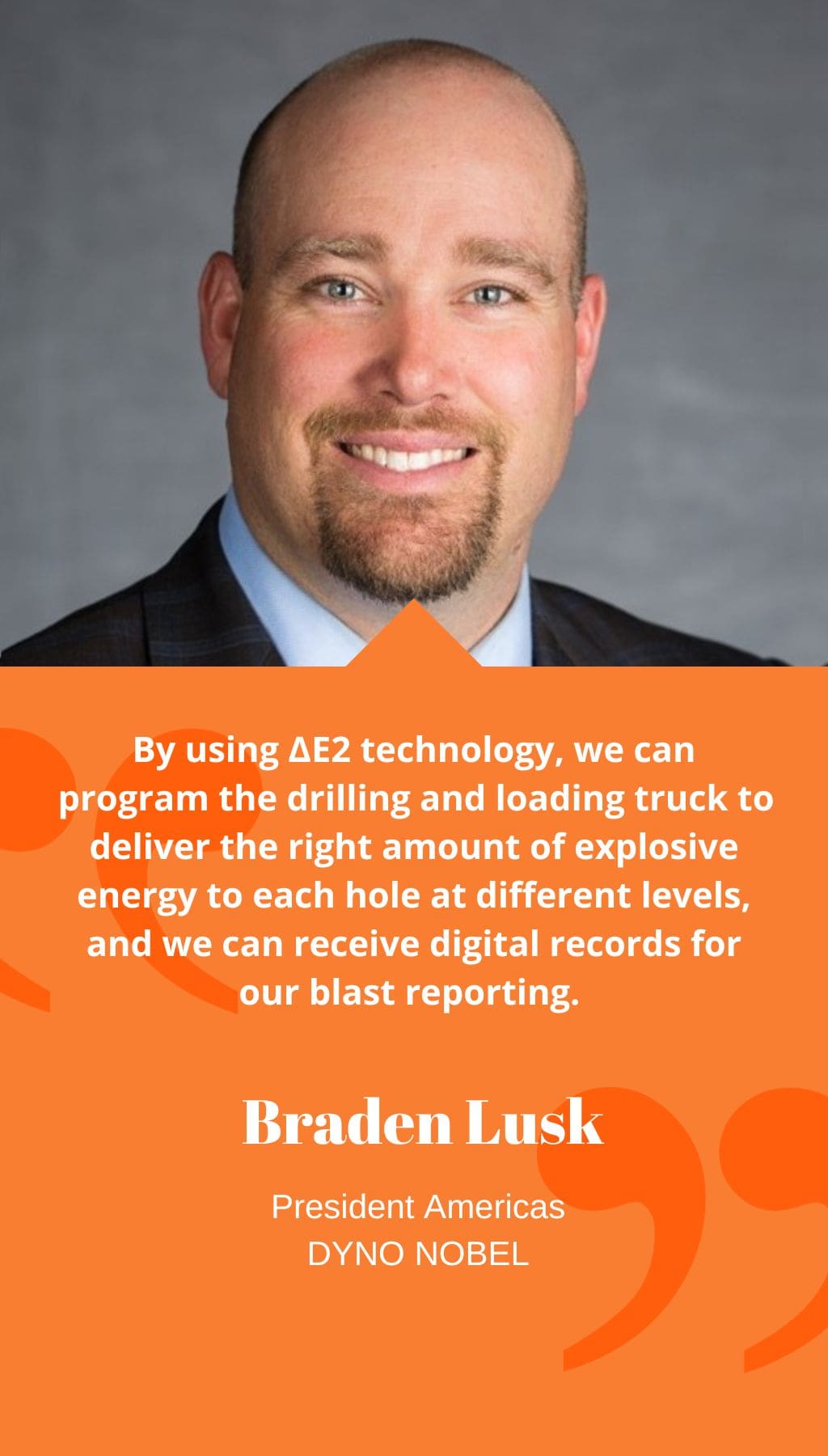
- USA | 23 May 2023

Can you share with us some details about Dyno Nobel’s latest innovations in blasting technology?
As technology continues to advance, Dyno Nobel has developed some unique products, such as ΔE (DIFFERENTIAL ENERGY), which is a proprietary bulk explosive. We have also implemented ΔE2 (Delta E Squared) technology, which uses data from drills or other sources to characterize rock properties and allow for targeted placement of energy in the blast hole. This technology enables mine blasting load plans to be sent directly to our state-of-the-art bulk emulsion trucks, which are loaded as designed using our DynoLogix software. Combining these materials with our latest generation electronic detonating systems, our DigiShot Plus 4G, allows us to control blasting outcomes more efficiently. Additionally, we are investing heavily in developing technologies related to more efficient energy use, as well as automated loading and wireless initiation systems.
What can you tell us about DigiShot Plus 4G system and how digitalization is shaping the company’s innovation focus?
The DigiShot system has been evolving over several years, and the DigiShot Plus 4G system is currently top of the line in the market. One of our products that works well with DigiShot Plus 4G is our Commander Blaster System, which provides flexibility for larger mines in their blasting initiation sequences and remote firing. Digitalization has affected every aspect of the company, and we are working to understand how our customers can improve their milling processes by providing real-time data-driven information. By using ΔE2 technology, we can program the drilling and loading truck to deliver the right amount of explosive energy to each hole at different levels, and we can receive digital records for our blast reporting. This wealth of data over the life of a mine allows us to understand and track the blasting history and gauge efficiency.
What impact can Dyno Nobel have on the productivity of mining operations?
Our goal is to discover the outcomes of our blasting procedures and change our processes to provide the customer with the desired outcomes. This requires strong relationships, expertise on the side of both companies, and a digital interface that makes it easier to map and implement the desired results. Being able to integrate previously disconnected systems and being able to connect data from machines at the mine site to our systems has been critical in improving the productivity of mining operations.
What is Dyno Nobel’s approach to training and education, and could you give some insights into the Nobel Academy?
Dyno Nobel has launched several programs inside the company through what we call the Nobel Academy. It starts with our blaster and operator training and goes all the way to leadership training. Dyno Nobel not only trains its staff but also our customers’ employees on how to safely operate with our systems and products. We believe that proper training and education are essential to ensuring safety in mining operations and achieving optimal outcomes.














